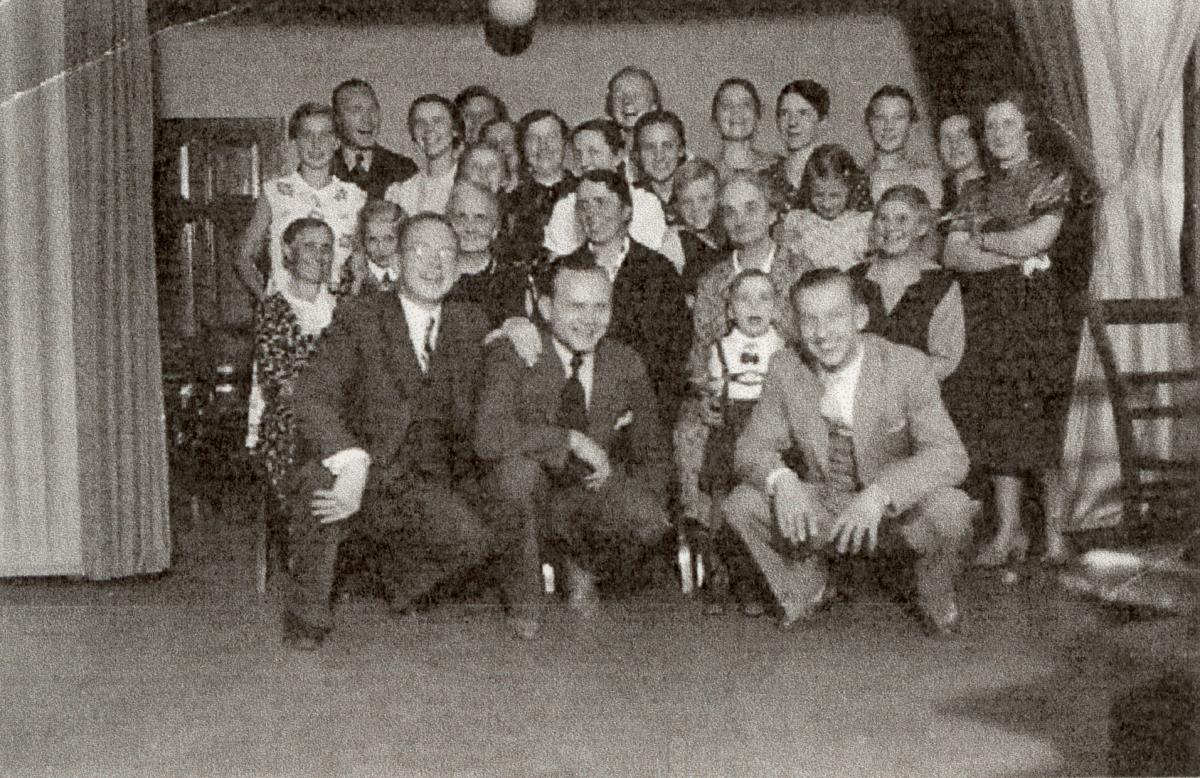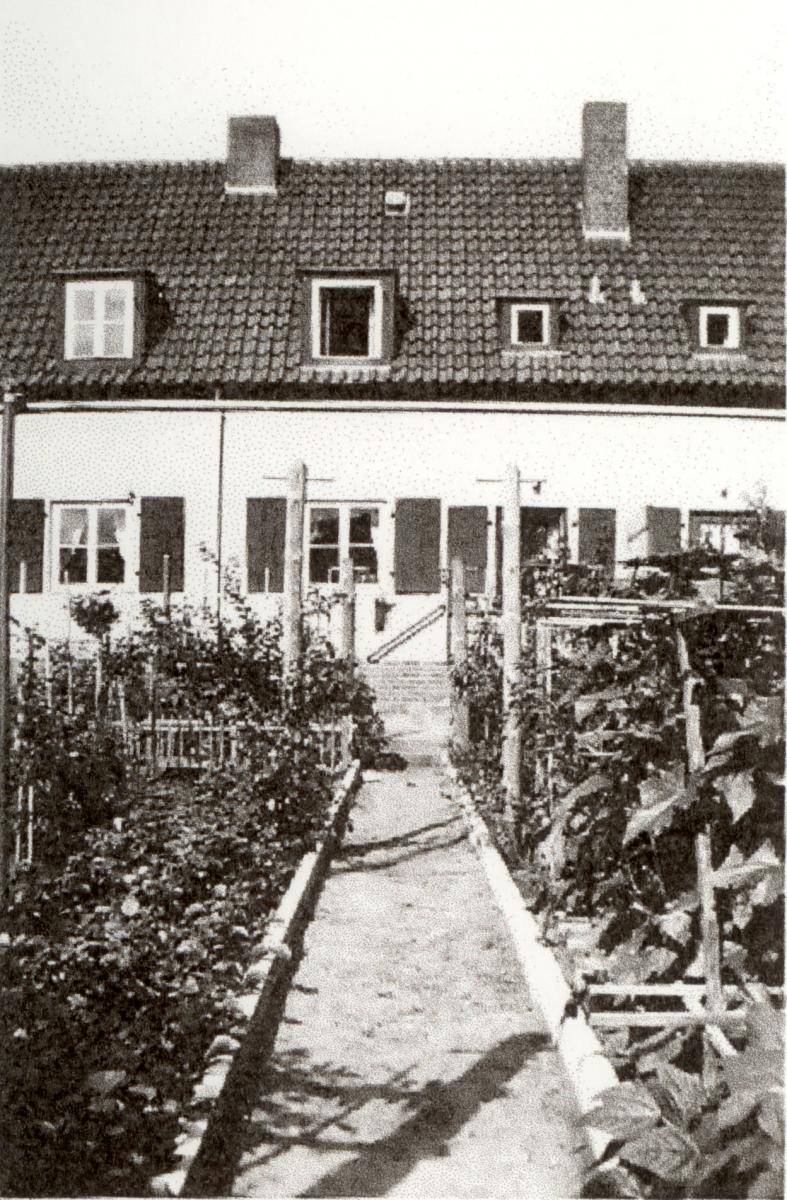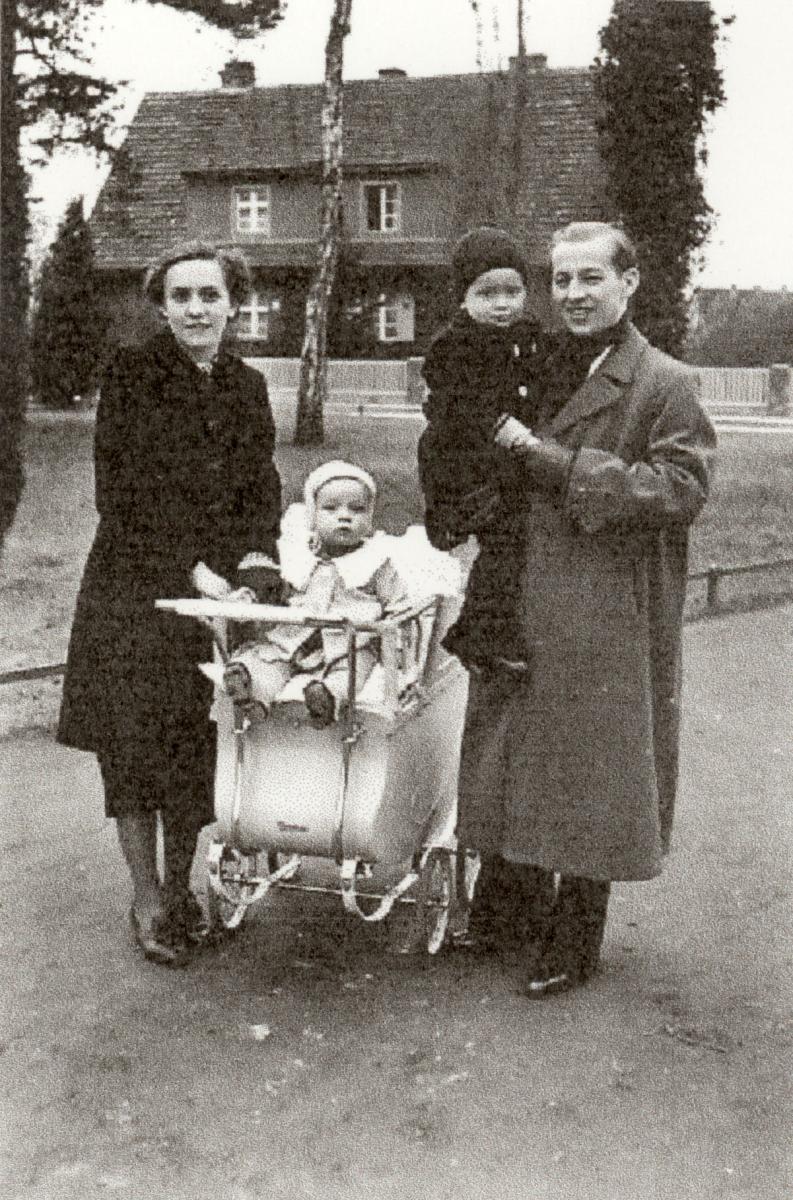Rathenow Branch, Berlin District
Roger P. Minert, In Harm’s Way: East German Latter-day Saints in World War II (Provo, UT: Religious Studies Center, Brigham Young University, 2009), 100-3.
“If we had only been able to come to Salt Lake City before the great war, we could have missed those twelve terrible years that we now would like to forget.” This statement written in 1958 could have been made by thousands of Latter-day Saints who experienced Hitler’s Third Reich.[1] The writer, Gerda Hille Hubrich, was essentially the mother of the Rathenow Branch from 1936 until her emigration to the United States.[2]
| Rathenow Branch[3] | 1938 |
| Elders | 3 |
| Priests | 1 |
| Teachers | 1 |
| Deacons | 1 |
| Other Adult Males | 11 |
| Adult Females | 37 |
| Male Children | 3 |
| Female Children | 2 |
| Total | 59 |
Gerda Hille was born in Glienick, near Berlin, in 1918. In 1935, she married Fritz Hubrich in Guben on the Neisse River. Both were recent converts to the Church.[4] Their first son, Ralf, was born in Guben in 1936 and soon thereafter the family moved to Rathenow, a town fifty-five miles directly west of Berlin. Fritz had been a weaver in Guben, but found work with the Emil Busch Company in Rathenow as a mechanic. He stayed there until he was sent to war. The Hubrich family expanded the Latter-day Saint population in Rathenow because they brought Gerda’s mother and sister with them from Guben, and several Hubrich sons were born in Rathenow.
The Hubrichs remembered holding Church meetings in various schools as well as in the homes of members. According to mission records, the meetings were being held in the Hubrich home at Paul Nitzsche Strasse 24 in January 1943.[5] Their living room measured about fifteen by eighteen feet. There were seats for most of the older members, while the younger ones sat on the floor; attendance varied from ten to twenty persons. Sunday School was held in the morning and sacrament meeting in the evening, just as was done in larger branches.
Fritz Hubrich had been ordained to the priesthood by district president Richard Ranglack and was eventually called to be branch president. There were few other priesthood holders, and by the end of the war none were at home; thus the branch could not have a sacrament service as part of their meetings.
The general minutes of the Rathenow Branch show the following entry dated September 30, 1946, written by Fritz Franke:
In January 1943 I was drafted into the army, as was Branch President Fritz Hubrich in May of the same year. The Rathenow Branch was thus devoid of leaders until 1 August 1943, when Brother Fritz Kuefner of the Berlin Spandau Branch was called to lead our branch.[6]
In 1943, Fritz Hubrich was drafted into the Wehrmacht and sent to the Eastern Front. He had no scriptures in his possession, never attended a meeting of the Saints or took the sacrament, and never met another Latter-day Saint soldier. He was completely isolated from the Church while he was on active duty, but he said his prayers every day. Serving as a radio operator, he witnessed the retreat of the German army from the Soviet Union back to the fatherland. One of his major combat experiences was the German attempt to rescue troops encircled by the enemy near Minsk.
 The members of the Rathenow Branch gathered for this photograph in 1937. (G. Hubrich)
The members of the Rathenow Branch gathered for this photograph in 1937. (G. Hubrich)
Like most members of the Church, Sister Hubrich was not spared the terror of attacks from the air on the civilian population in German cities. She recalled:
One of the most dreadful days of my life was in April, 1944, when our city was for the most part destroyed by bombers. I lay with my new baby boy [Winfried] in bed, too weak to get around. The bombs fell all around us. We could see them explode through the window and expected every minute to be the last one. I prayed aloud for help as our house rocked back and forth and some of our neighbors’ houses blew to pieces. Every second we thought our house would be the next one destroyed.
To temporarily escape further air raids in Rathenow, Gerda Hubrich traveled east to Silesia with her children. They stayed in that part of Germany for three months in what Sister Hubrich called “a small village safe from all of the horrors of war.”
Far from home, Fritz Hubrich watched as several partisans were rounded up one day in the spring of 1945. He was ordered to shoot the partisans (which was legal under international law), but instead he directed his fire at the trees above. The officer in charge was angry at him for not obeying the order, but no penalty was administered. “Life didn’t mean anything at the time,” Fritz later recalled.
The advancing Red Army conquered Rathenow in April 1945 without significant resistance. Much of the town had already been destroyed. As in other areas under their control, the conquerors quickly set out to enjoy the spoils of war. Sister Hubrich was a mother of three boys at the time, but she and her fifty-five-year-old mother were equally desirable targets of marauding soldiers. From late April through much of May 1945, Gerda kept her three sons close by her side. At the same time, she was being guarded by her own mother:
My mother would sit by the door, [Russian soldiers] came in drunk, and then they would see my mother . . . holding a candle sitting there, and the Russians said “Come, Frau!” My mother was very smart and said, “Frau not here, Frau in other house!” The women in the next house said the same thing. This happened for fourteen days.
At about that time, Fritz Hubrich’s unit had retreated into Germany before the Soviet advance and he was about one hundred miles away from his family. He was eventually captured by the enemy and forced to dig his own grave. Gerda told his story:
Just before they were to shoot him, some German prisoners went by and after much pleading he was allowed to go with them. He escaped but was soon recaptured. Again he escaped without being harmed. This happened again; he was beaten a little and shot at a number of times, but he came through it all.[7]
Feelings of depression over the lost war and the terror of imminent assault at the hands of marauding conquerors was enough to drive thousands of German citizens to suicide. It can hardly come as a surprise that a Latter-day Saint mother would consider such a way out of the suffering. Gerda Hubrich had escaped her incarceration in a village just south of Rathenow and was walking the four miles to her own home with her sons and her mother. Along the way she paused by a small lake, “intending to end our troubles by drowning.” She later recalled telling them, “Boys, let’s go into the lake, and then we’ll be with our Father in Heaven.” Taking her life and the lives of her sons seemed to be the only way out of their misery. However, “my children screamed, and my mother said, ‘God has protected us this far, and we will trust that He will continue to do so.’ And this He did.”
 A view of the Hubrich home in Rathenow in 1940 (G. Hubrich)
A view of the Hubrich home in Rathenow in 1940 (G. Hubrich)
Within two days of this near-tragedy, a disheveled Fritz Hubrich arrived in Rathenow to a wife who had nearly ended her life. The joyous reunion dispelled worry about the pending destruction. “Did they touch you?” he asked of his wife, knowing full well what Red Army soldiers were doing to women all over eastern Germany. How happy he was to learn that his wife had escaped such brutal treatment!
 Gerda and Fritz Hubrich with their sons Ralph and Wolf Dieter in 1939 (G. Hubrich)
Gerda and Fritz Hubrich with their sons Ralph and Wolf Dieter in 1939 (G. Hubrich)
The Hubrichs returned to a home inhabited by enemy soldiers but undamaged. They begged to be allowed in but were turned away. Fortunately, a place was found for them in bombed-out Rathenow. Nine months later, the family was finally allowed to occupy their home again. Just a few weeks after World War II concluded, branch president Fritz Hubrich welcomed the surviving Saints to worship services in the home of one of the member families. The Church was alive and would prosper in Rathenow.
In Memoriam
The following member of the Rathenow Branch did not survive World War II:
Walter Karl Neumann b. Rathenow, Brandenburg, Preussen 27 Mar or Nov 1933; son of Walter Friedrich Max Newmann and Else Frida Vogel; bp. 27 Nov 1941; d. pneumonia 27 Feb 1945. (CHL Microfilm LR 7336 11, General Minutes of Rathenow Branch; IGI)
Notes
[1] Church News, Deseret News, August 9, 1958, quoted in Dorothy South Hackworth, The Master’s Touch (n.p., 1961), 254.
[2] Gerda Hille Hubrich and Fritz Hubrich, interviewed by the author, Salt Lake City, June 27, 2007.
[3] Presiding Bishopric, “Financial, Statistical, and Historical Reports of Wards, Stakes, and Missions, 1884–1955,” CR 4 12, 257.
[4] As of this writing, Fritz Hubrich may be the oldest surviving former branch president of the East German Mission during World War II.
[5] East German Mission, “Directory of Meeting Places,” January 31, 1943 (unpublished). Private collection.
[6] Rathenow Branch, general minutes, CHL, LR 7336 11.
[7] Hackworth, Master’s Touch, 257.
